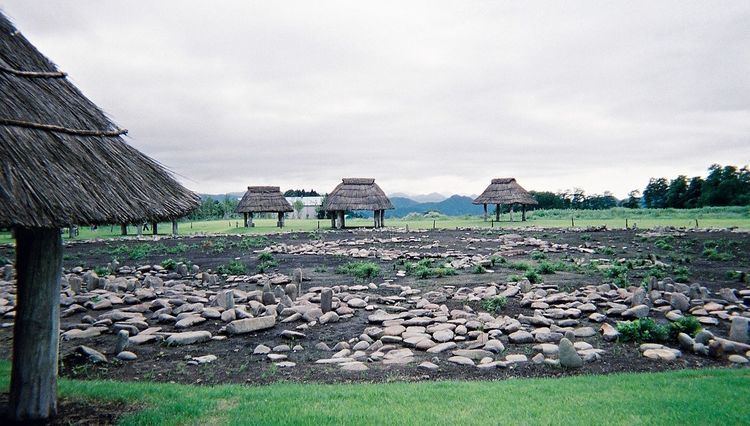Region JP Founded 2000 BCE Ownership Public Phone +81 186-37-3822 | Type landmark Public access Yes | |
 | ||
Hours Open today · Open 24 hoursMondayOpen 24 hoursTuesdayOpen 24 hoursWednesdayOpen 24 hoursThursdayOpen 24 hoursFridayOpen 24 hoursSaturdayOpen 24 hoursSundayOpen 24 hoursSuggest an edit Similar Isedōtai site, Oyu Hot Spring, Sannai‑Maruyama site, Stone circle, Towada‑Minami Station | ||
Ōyu Stone Circles (大湯環状列石, Ōyu Kanjyō Resseki) is a late Jōmon period (approx. 2,000 – 1,500 BC) archaeological site in the city of Kazuno, Akita Prefecture, in the Tōhoku region of northern Japan. The remains were designated a Special National Historic Site of Japan in 1956 by the Japanese government. The site is located approximately ten minutes by car from Towada-Minami on the JR East Hanawa Line of the Towada Interchange on the Tohoku Expressway.
Site
The site consists of two large stone circles located on an artificially flattened plateau on the left bank of the Oyu River, a tributary of the Yoneshiro River in northeastern Akita Prefecture. The site was discovered in 1931, with detailed archaeological excavations taking place in 1946, and in 1951-1952.
The larger circle, named the “Manza” circle has a diameter of 46 meters, and is the largest stone circle found in Japan. A number of reconstructions of Jomon period dwellings have been built around the site. The slightly smaller circle, named the “Nonakado” circle, is 42 meters in diameter and is located around 90 meters away, separated from the “Manza” circle by Akita Prefectural Route 66. Each circle is made from rounded river stones brought from another river approximately 7 kilometers away. Each circle in concentric, with and inner and an outer ring separated by an open strip approximately 8 meters wide. Each circle contains smaller clusters of stone, including standing stones surrounded by elongated stones in a radiating orientation, forming a sundial which points toward the sunset on the summer solstice and allows for calculation of the winter solstice, the vernal equinox and the sun’s movements.
Each circle is surrounded by the remains of buildings, storage pits and garbage dumps, and clay figurines, clayware and stoneware (including everyday pottery), stone swords and objects have been discovered. Although the form of the stone circles made have been based on the shape of circular settlements, there is no indication of permanent settlement on the site.
The site has been submitted for inscription on the UNESCO World Heritage List as one of the Jōmon Archaeological Sites in Hokkaidō, Northern Tōhoku, and other regions
